

Joseph Daher, Syria After the Uprisings: The Political Economy of State Resilience. Chicago: Haymarket Books, 2019.
The Swiss-Syrian Marxist academic Joseph Daher’s sweeping study, Syria After the Uprisings, represents an important contribution to our political and historical understanding of Syria’s Revolution. The book principally investigates the resilience of Bashar al-Assad’s regime in the face of a popular revolution that began nearly nine years ago, in March 2011, as part of the uprisings that spread throughout much of the Middle East and North Africa (MENA), starting with Tunisia in December 2010.
Despite his rejection by the vast majority of the Syrian people, and their inspiring models of self-organization in this struggle, Assad has managed to survive and even, alarmingly, prevail in reconquering most of the country by mobilizing his domestic supporters and relying on substantial foreign military and financial support from Russia, Iran, and Hezbollah, among others. In a striking parallel to Franz Neumann’s analysis of the bases of Nazism having been the military, state bureaucracy, and industrialists, Daher finds the Syrian bourgeoisie, military and security forces, and loyalist religious figures, combined with the passive acceptance of civil servants, to be the Assad regime’s main pillars of support (Daher 110). This similarly broad bourgeois and bureaucratic confluence under one party might help explain why the unrepentant Nazi official Alois Brunner found employment as an adviser to the Assad dynasty and helped the regime implement Gestapo methods, and why neo-Nazis rabidly defend this regime in our own time.
To this day, from the commencement of protests in the southern city of Dera’a in March 2011, and spreading throughout the country—including Kurdish regions—soon thereafter, the Assad regime has resorted to uncompromisingly applying the “Hama model” of ruthless State terror. (This notorious “Hama manual” is named after the state’s 1982 massacre of thousands of civilians in retaliation against an ostensible Muslim Brotherhood uprising.) Civil protesters and civilian populations outside of the country’s northeastern region have been the regime-axis’s main target, as the sordid fate of millions of civilians in Idlib today now reveals (Daher 282; Dagher 2019: 225-39). Not only this, but the ebbing of the Revolution also reflects a sustained international and regional effort on the part of imperialist powers to “stabilize Syria under Assad’s rule” and “put an end to the uprising in Syria” (229-231).
It is thus evident how much the unsettling crushing of the Syrian people’s courageous attempt to oust Assad reflects the brutal imperatives ofnot only international neo-liberalism, but also of the racial-capitalist order which, as Cedric Robinson argued, maintains and modernizes feudalist forms of exploitation by mobilizing racism, imperialism, and genocide. Therefore, the world’s powers did not generally encourage processes of democratization, human rights, and self-emancipation for Syrians, but on the contrary, approached the conflict through a highly Orientalist, Islamophobic, anti-Arab, and often-times anti-Kurdish lens. Daher writes, “[t]here was a general global trend aimed at liquidating the Syrian uprising in the name of the so-called war on terror” (290). Belying the disinformation peddled for years by many Western self-styled leftists to save face on this question, the author shows in detail how the Syrian people have faced three counter-revolutions: one by the Assad regime; a second by the ultra-reactionary, Salafi-jihadi armed forces that would come to dominate the military struggle against Assad; and a third by regional and global imperialism.
In northeastern Syria, known as Rojava or the Democratic Federation of Northern Syria (DFNS), Daher views the Democratic Union Party (PYD) not as an Assad-regime proxy but as having made a “mutually beneficial” (158) tacit arrangement with Bashar in July 2012: that most of the regime forces withdraw, transferring power to the PYD, in order to repress opposition forces in the rest of Syria. While the PYD and the Syrian Democratic Forces (SDF) have at times both collaborated and disagreed with the regime, it is without doubt that the SDF and PYD, together with the civilian population of the region, have borne the brunt of Syria’s second counter-revolution. The latest news, however, has suggested to some observers that the PYD has joined Assad’s counter-revolution, a charge that the PYD strongly denies.
In this review, we will examine Daher’s framing of Syria’s three counter-revolutions, focusing mostly on the latter two. This does not mean, of course, that we underplay the truly astonishing depth of Assad’s counter-insurgent war, which has involved the regime axis killing the majority of the 500,000-plus human victims (and killing an estimated 92% of the civilians), allegedly using chemical weapons over three hundred times, and rendering 12 million (half the country) homeless. Rather, we seek to examine Daher’s original contributions, which include the author’s contextualization of the Syrian Revolution and its various counter-revolutions into a broader story of global neo-liberalism (x-xi), and to consider the tension between, on one hand, Daher’s advocacy of centralized leadership in general and, on the other hand, his justified harsh criticism of specific centralized leaderships in the PYD and the anti-Assad Syrian National Council (SNC). Despite numerous shortcomings of the opposition’s leadership, including its disastrous opposition to Kurdish autonomy, Syria’s Revolution remains a permanent one, and at least as resilient as the regime it contests.
The Failures of the Opposition
As central to the long-term causes of Syria’s popular insurrections, Daher identifies the decade of accelerated neo-liberal policy following Assad’s 2000 ascent to power. Welcoming the World Bank and International Monetary Fund’s involvements in Syria and allowing the private sector to control an estimated 65 percent of the economy, the regime oversaw a situation where, by 2007, a third of the population lived below the official poverty line and another 30 percent lived just above that level. As in many other neo-liberal economies, economic liberalization relied on well-known patterns of brutal State violence and a glaring “absence of democracy” (22-3, 34, 37).
Daher traces the degradation of the Syrian Revolution’s initial values of inclusiveness, egalitarianism, and pluralism—embodied by the protesters, reformist and revolutionary alike, who demonstrated against the regime and founded hundreds of Local Coordinating Committees (LCC’s) and local councils—by the waxing hegemony of Islamist and Salafi-jihadist armed groups over the oppositional movement, following its militarization in response to the regime’s ruthless violence. Yet this process reifying reactionary rebels was no fait accompli, but rather the goal consciously sought by the Assad regime: to corrupt the protest movement and LCC’s, with which it could not compete on the level of philosophy or messaging, by “liberating” Salafi-jihadists and Ikhwan, or members of the Muslim Brotherhood, from Sednaya and other prisons in March and May 2011—just as the security forces decimated civil protesters (121).
This “strategy of tension,” referring to a state’s purposeful provocation of insurgent violence, is well-known, with precedents in the Tsarist Empire, post-Fascist Italy, and even potentially, in Trump’s U.S. In the case of Syria, it is evident that the Assad-regime axis used Salafi-jihadists, including the Islamic State/Da’esh (IS), to advance a propagandistic framing of the complex, multi-party conflict into a more binary one between the regime and a foreign-backed Islamist reaction (145). Paradoxically, however, this process has involved Assad recruiting additional foreign parties to intervene in the war in his interest. That the regime and Russian air forces systematically targeted rebels first before the Islamic State—both states’ media presentations to the contrary—is consistent with this reality (146). Assad’s collaboration with IS has also included purchasing oil from IS and even a six-month period of sending regime engineers to work on IS-controlled oil fields in Deir Ezzor (Hensman 222-223).
The Syrian Revolution has expressed deeply affirming, humanistic, and (in Marcusean-Freudian parlance) even erotic dimensions, as the message of free Syrians has been non-sectarian, egalitarian, and inclusive. Still, the anti-Assad opposition has not always upheld a Hegelian determinate negation of the regime’s brutality. Instead, the official opposition has had numerous shortcomings. Daher charges the Syrian National Council (SNC) and National Coalition of Syrian Revolutionary and Opposition Forces (Coalition) with being led by the Ikhwan among other sectarians, and advancing nothing more than a strictly capitalist economic program favoring landowners and the bourgeoisie rather than workers and peasants (Daher, 115-6), tracing its emergent dominance by increasingly sectarian, socially exclusive, misogynist, and chauvinist actors and social ideologies and imaginaries. For example, the founding of the reactionary rebel group Jaysh al-Islam was “engineered” by Saudi intelligence, while its ally Ahrar al-Sham, supported by Turkey and Qatar, sympathizes with the Taliban’s social project (121-2). Even apart from Da’esh, many anti-Assad rebels openly sought an Islamic State, repelling Syria’s ethno-religious minorities, many women, and others who sympathized with the anti-regime cause—not to mention much of the international left (112, 125, 140-6).
On Daher’s account, the revolutionary-democratic struggle waned just as the power of Islamists and Salafi-jihadis ballooned. The author provides several reasons for the successes of this second counter-revolution (the first being Assad’s). For one, the West’s lack of willingness to intervene decisively against the regime, especially after its sarin gas massacre targeting civilians in Ghouta and Moadimiya in August 2013, killing over a thousand people, led the SNC and Coalition to increasingly welcome fundamentalist fighters, just as Saudi, Qatari, and Turkish States and private donors alike took advantage of President Obama’s reluctance to directly engage Assad by augmenting support for their preferred reactionary armed groupings on the ground (113-21).
In fact, in the wake of the Ghouta massacre, the armed opposition network known as the Free Syrian Army (FSA) became increasingly discredited and outcompeted by better-funded and -armed rivals. That the Obama administration had imposed strict conditions blocking the delivery of heavy weapons and anti-aircraft missiles to the FSA arguably exacerbated this dynamic, leading to many FSA fighters defecting to more Islamist- and Salafi-jihadi-oriented outfits (127-8). A similar clientelist relationship appears to have taken hold between the FSA and Turkey, leading to the monstrous creations known today as the tFSA and its affiliates, which are responsible for numerous war crimes against ethno-religious minorities, especially Kurds. As Daher observes, the fall of East Aleppo in December 2016 further tightened the grip of reaction among the anti-Assad rebels who were left standing (130).
In contrast to certain accounts by prominent anti-Assad activists, and in keeping with his historical-materialist approach, Daher promotes no illusions about the socio-political character of the armed anti-regime groups that, through their own ruthlessness and backing from foreign despots, have outcompeted the rest and survived to date. Jabhat al-Nusra/Hayat Tahrir al-Sham (HTS), Jaysh al-Islam (JAI), and Ahrar al-Sham are, like IS, far-rightist ultra-sectarians and highly heterosexist misogynists. Syria’s sexual, gender, and ethno-religious minorities, whether Kurdish, Christian, Alawi, Shia, or Druze, rightly fear such groups, as much as they have to fear the regime, too.
Daher describes how many Syrian minorities have anxiously recalled the fate of Iraq’s Christian community, half of whom have abandoned the country following their targeting by jihadist forces following the 2003 Anglo-American invasion of Iraq, adding that Idlib’s Christians fled the city altogether before al-Nusra and Ahrar al-Sham ‘liberated’ it in 2015 (140-4). As such sectarianism was exacerbated, the fate of the Revolution appeared to be sealed, with JAI and HTS smashing LCC’s, empowering religious police, and installing themselves as capitalist exploiters of the people and territories they had ostensibly ‘freed’ (132-3).
Nevertheless, neither these reactionaries nor those from the Assad-regime axis have been able to suppress the element of continuous popular resistance initiated in March 2011. Daher highlights this persistent dialectical resilience of the “long-term revolutionary process” which has no signs of disappearing since “the conditions that led to the uprising are still present” (Daher 293-4). Daher’s observation is consistent with Karl Marx and Raya Dunayevskaya’s theory of “revolution in permanence,” positing that an independently organized working class may continue revolutionary processes despite the successes or defeats of liberal democrats. Dunayevskaya argued, contra Rosa Luxemburg, that it was no “mistake” for Marx to propose this concept in 1850 after the crushing defeats of 1848-9, since the “highest point of any revolution” serves “as the point of departure for the next revolution (Dunayevskaya 307).
Before regime reconquest in 2018, the Mother’s Movement organized public protests against the imprisonment of their children by Jaysh al-Islam in Eastern Ghouta, and locals in Raqqa resisted the imposition of rule by IS in myriad creative ways (134-7), just as civil resistance raged against HTS’ reign in several cities of Idlib province for years, until the recent fall of much of the region to the regime. Even as the regime-axis had menaced invading Idlib, masses of free Syrians defied both the regime and jihadist militias with large-scale protests. While such demonstrations by themselves cannot realistically stop Assad and Putin’s war-machine, they express the people’s continued optimistic and revolutionary hopes. Meanwhile, new uprisings have emerged since 2019 in Sudan, Algeria, Iraq, Lebanon, and Iran, with a potential to boost the region’s liberatory movements.
The PYD and the Kurdish Question
As in his other writings, Daher supports Kurdish self-determination, considering his criticisms of the Syrian Coalition’s chauvinistic rejection of Kurdish national demands and support for Recep Tayyip Erdoğan’s war-drives, as of some FSA fighters’ and officers’ supremacist attitudes toward Kurds and Alawis (117, 140, 161). Nonetheless, he is no uncritical supporter of the PYD, making him no friend to those invested in mythologizing Rojava. Daher delineates a “sort of alliance” between the Kurdistan Workers’ Party (PKK) and Hafez al-Assad as dating back to the early 1980’s, when Abdullah “Apo” Öcalan was given sanctuary by the regime. This relationship, which provided the PKK with bases from which they would launch raids into Turkey, lasted until the Adana Agreement of 1998, leading to Öcalan’s expulsion and subsequent arrest and imprisonment (150-1).
Despite this temporal break in relations, Daher explains how the PYD—the PKK’s local Syrian affiliate—benefited from Bashar’s benevolence and support from the US and Russia following the commencement of the Revolution. Still, secondary to the efforts expended by the Syrian Democratic Forces (SDF) in defeating IS’s territorial presence, the SDF and PYD have been abandoned by both major imperialist powers, neither of whom are willing to risk their relationship with Turkey (183). It is evident, then, that the SDF and the communities it protects—many of them being ethno-religious minorities—have been used and discarded by their erstwhile bosses Trump and Putin, now to face the hostile Turkish State and its tFSA proxies, which ironically enough reproduce Ba’athist prejudice in their aggression against Kurds and other minorities (169).
Daher chronicles the continuities between the 2004 Kurdish Intifada, on the one hand, which began in Qamishli and spread to Afrin, Aleppo, and Damascus, and the enthusiastic reception of the 2011 uprising, on the other, among Kurdish protesters in Amuda and Qamishli, who founded LCC’s in parallel to the rest of the country (151-2). In contrast, among the Kurdish political parties, only the Kurdish Future Movement and the Yekiti Party supported the anti-Assad Revolution on principle from the start (153-4). For this, the former’s leader, Meshaal Taimmo, would be assassinated presumably by pro-Assad militants in October 2011—in an eerie parallel to the December 2019 murder of the Syrian Future Party’s General Secretary Hevrin Khalaf by Ahrar al-Sharqiya in the wake of Turkish incursion east of the Euphrates River.
In July 2012, the Assad regime withdrew most of its forces from northeastern Syria to suppress the Revolution, handing over control to the PYD, which will then monopolize power in the region, block the movement of rebels and their supplies, and increase Erdoğan’s anxieties. Hence, both the Assad regime and the PYD gain, but the people and the revolutionary cause lose, as the uprising is divided “along ethnic and sectarian lines” (157-8, 161). Furthermore, as retaliation, Turkey will allow foreign fighters, to pour across the border into Syria between 2011-2014, strengthening Salafi-jihadi formations, including IS (163-4, 186, 224).
Undoubtedly, the PYD, its self-defense forces the YPG and YPJ (participants in the SDF), and the Kurdish and other minority civilian population have faced significant adversity and loss since the beginning of the Revolution, beset as they have been by such rebels as JAI, al-Nusra, and tFSA alike in 2016 refusing to recognize the announced autonomy of Rojava (179), in addition to IS and Turkey. Certainly, the threats posed by these numerous actors have served to push Kurds toward the PYD (153). Still, Daher illustrates the wholesome persistence of nonsectarian solidarity in the collaboration of FSA and Liwa al-Thuwar (The League of Revolutionaries) with the PYD-affiliated YPG in forming the Northern Sun Battalion to defend Kobani in 2014 (168).
To be clear, this does not mean that YPG abuses of Yekiti Party supporters, the SDF’s forcible conscription, or the PYD’s suppression of local protests should be forgotten, much less the collaboration between YPG and the Assad regime in conquering East Aleppo in 2016, the Tel Rifaat community’s displacement by Russian airstrikes called in by the YPG (156-181), or the SDF’s sales of oil and gas to the regime. However much more relatively progressive the Rojava project is in terms of the inclusion of women and minorities, when compared to regime and rebel areas, the PYD arguably perpetuates aspects of the PKK’s historical Stalinism through its democratic-centralist appointment of unelected council leaders in Manbij (Marcus 2009). What is more, while Rojava’s much-celebrated communes have significant power over everyday issues, security forces frequently bypass communal accountability, and the PKK’s headquarters in Iraq’s Qandil Mountains reportedly has the “final say in decisive questions” (174-5).
The current plight of the SDF is arguably the fruit of the “deal” the PYD appears to have tacitly made with the Assad regime in July 2012, which PKK commander Bahoz Erdal recently and ironically hailed:
“The regime should thank the YPG and the people of Rojava.” Were this arrangement not to have been made, or were the Kurdish Future Movement or Yekiti Party somehow to have outcompeted the PYD in the region known as Rojava/DFNS, and if the Arab opposition forces in turn had agreed to support Kurdish self-determination, the fate of the Revolution may have been very different. Now, as Idlib falls and its displaced suffer and perish in the wintry cold, Bashar demands that the SDF surrender in the face of Turkish aggression.
Regional and Global Imperialist Counter-Revolution
Syria’s third counter-revolution, led by regional and global imperialists, has opposed both the Revolution as well as aspects of the second counter-revolution against it to save Assad and buttress the normal functioning of global capital. Illustrating the fundamental inhumanity of the inter-state system, Russia and China, as permanent UN Security Council members, have vetoed all resolutions aimed at accountability for Assad and Putin’s crimes in Syria (189). Russia has wielded this veto power 14 times; China, 8. Both rising imperialist powers have wanted to ‘avert’ a repetition of the “Libya model” in Syria, whereby the authoritarian leader is deposed by foreign intervention in conjunction with revolt at home, as both would have lost greatly in terms of military, economic, and political power, were Assad to have been toppled.
The fall of the regime would also have served as a bad precedent for both Putin and Xi Jinping, in terms of their own fates. Likewise for the Islamic Republic of Iran: hence, the Iranian Revolutionary Guard Corps’ (IRGC) massive intervention, led by the late Qassem Soleimani, who personally founded Syria’s National Defense Forces (NDF), trained in turn by Hezbollah (196-203). Grimly, Russia has sold billions of dollars in arms to Assad, and had billions privately invested on the eve of the Revolution, whereas Iran has spent billions on its military intervention to prop up the regime, as on extending credit lines to Bashar (191-8). Rather obscenely, and in parallel to U.S.-Israeli practice, Russian arms manufacturers have tested and “improved” over 300 weapons systems on Syrian civilians and rebels alike. Moreover, Russian and Iranian capitalists have profited by the regime’s selling-off of resources such as land, oil, and phosphate mines as part of an putative economic “liberalisation” that more closely resembles neo-colonial looting (199-208).
Crucially, Daher contrasts the strategies of Israel, the US, and the Gulf autocracies regarding Assad. Netanyahu is shown as saying Israel has no problem with the regime, while the U.S. was initially cautious in its criticism of security forces’ murder of protesters at the start of the uprising and, indeed, made no protest upon Russia’s direct entrance into the war in October 2015 (213). In 2011, Obama administration officials Hillary Clinton and John Kerry even called Assad a “reformer” and celebrated “progress in that relationship” between the US and Syrian governments. Despite heavy investment in Syria on the eve of the Revolution, Saudi Arabia and Qatar, whose state media companies were similarly “cautious” at the beginning, became the primary financiers and suppliers of the rebels once they realized they couldn’t use the protest movement to pry Assad from Iran, their principal regional rival (216-8). While the US government saw far less interest in mobilizing to oust Assad due to Syria’s relative lack of oil and Obama’s avowal of a pull-back from the region, the U.S. president did call for Assad’s ouster in August 2011, and in 2014, Congress approved $500 million to “train and equip” rebel fighters against IS.
Nonetheless, when trainees in the “New Syria Forces” learned in 2015 of the condition that they would have to swear never to use their training or arms to attack regime forces, three-quarters deserted the program, and the “Division 30,” a graduate of “Train and Equip,” was quickly decimated on the battlefield by al-Nusra. Plus, upon the emergence of IS, US executive strategy became “IS first,” giving the impression that the regime’s fate came second, when this was not the case. Both the terms of the “Train and Equip” program and the SDF constitution focus exclusively on IS—neither on Assad (209-13). Trump merely continued Obama’s tendency, altogether canceling support for the anti-regime rebels in 2017. Though unmentioned by Daher, the “Iran nuclear deal,” known officially as the Joint Comprehensive Plan of Action (JCPOA), may also factor in here, considering that Obama effectively “traded” intervention against Assad to Iran for a de-escalation of tensions over nuclear enrichment.
In further examining instances when the U.S. has put its interests far above Syrians’ safety, one could add the U.S.-coalition war crimes, alleged by the United Nations and Amnesty International, including the killing of more than 1,600 civilians in Raqqa and the “near complete destruction of towns and villages in and around Hajin and Baghuz.” Additionally, Washington’s allyship with Ankara has led to its tacit support of Turkey’s repressive invasion of DFNS and closed borders to Idlib refugees. Finally, Washington’s long-term reluctance to airdrop food to Syrians under regime siege, citing in part the inane concern that food might fall into terrorists’ hands, has needlessly exacerbated Syrian civilians’ massive suffering.
According to this analysis, then, the U.S. government in fact bears significant responsibility for stabilizing the regime and derailing and suppressing the Syrian Revolution. In contrast to the lines of fringe U.S. presidential candidate Tulsi Gabbard and many Western so-called “anti-imperialists” and “leftists,” the U.S. has therefore been an enemy of the Syrian people’s Revolution, and a party to their mass-execution, alongside Russia, Iran, Saudi Arabia, Qatar, and Turkey, in the name of the War on Terror. Such dehumanizing dynamics reduce the Syrian people to pawns on the chessboard of the great powers, who repeatedly sell them out, opting for their politicide over the possible establishment of a pluralistic democracy in Syria, considering the dangerous regional precedent such an example might pose for despotic powers (289). That the Revolution has been defeated by a military axis employing the past and present strategy and tactics of Euro-American and Fascist imperialists communicates the continuum of global racial-capitalist and neo-liberal oppression.
Both the domestic and regional bourgeoisie stand to profit tremendously from Syria’s projected neo-liberal “reconstruction,” which Bashar intends to use to tighten political and economic control along sectarian and punitive lines. For example, the regime enacted Decree No. 66 in 2012 that enabled the expulsion of pro-opposition neighborhoods in Damascus, apparently without compensation, in order to develop high-end real estate projects. The same year, Decree No. 63 codified the seizure of assets of political refugees dubiously deemed “terrorists.” In 2018, Decree No. 10 spread nationwide the policies of Decree No. 66 and, by threatening to confiscate the homes of Syrian refugees, created further obstacles to their eventual return (233-78, 290-2).
Strikingly, not only have regional and global imperialists, capitalists, and authoritarians conspired to suppress the Syrian people’s revolution, much as Fascists, liberal imperialists, and Stalin’s Soviet Union drowned the Spanish Revolution in blood over eight decades ago. In an unsettling and macabre dynamic, the executioners of the Syrian revolutionaries also have been effectively assisted in their inhuman project by many self-styled, self-promoting leftist revolutionaries in the West, who, rather than be “imbue[d] with revolutionary idealism” by the example of popular struggle in Syria, have overwhelmingly erased this Revolution and guarded silence about or even openly sympathized with Assad and Putin’s genocidal counter-revolution.
The Question of Centralization
A tension persists between Daher’s pointed criticism of each specific centralized leadership and his general advocacy for centralization. One of our relatively few disagreements with Daher’s analysis regards his rejection of revolutionary decentralization.
In addition to obviously criticizing the concentrated power of Assad’s patrimonial regime, Daher delivers justly harsh criticism against the centralized leaderships of opposition and Kurdish groups including the SNC, Coalition, and PYD. Rather than presenting a non-sectarian alternative to the Assad regime, these leaders have developed disastrously close relationships with Turkey and Islamic fundamentalists in the former two cases and with the United States and the Russia-Assad axis in the latter case. Daher repeatedly describes the “failure” (112) of the Arab opposition and of “authoritarian and repressive politics” (287) within the PYD, leading a careful reader to question whether centralized leadership might be an intrinsic part of the problem.
And yet, Daher laments, “The protest movement suffered from some limitations. No united leadership represented it, and instead the coordination committees and youth organizations were set up.” Daher cites a study of nonviolent activists that concludes unified leadership would have “prevented the movement from fracturing” (72).
It appears to us, however, that just as unaccountable centralized leaderships facilitated sectarianism and fundamentalism, the greatest successes took place at the decentralized and grassroots levels. Daher describes how the local coordinating committees and local councils “attempted to achieve a situation close to dual power” (281). This situation was the norm through 2011 and 2012, and Syria still had 395 self-governing local councils as late as March 2016, about half of them elected rather than appointed. These councils were often remarkably resilient even when facing Hama-model repression, and in 2017 they held Idlib’s first free election since 1954. However, Daher appropriately criticizes the councils for having very low participation levels of women and of those without university educations (52-53). Meanwhile, within the DFNS, the parallel system of councils, which saw much higher levels of women’s participation, has been the site of the greatest community self-determination (175). These gains, however incomplete and temporary, echo Friedrich Engels’s 1885 insight—in parallel to that of the anarchist Peter Kropotkin—that decentralized local organs served as the “most powerful lever” of the French Revolution, leading him to partially reverse Marx’s earlier support for strict centralization as being “based on a misunderstanding.”
The early, decentralized protests were most conducive to overcoming ethnic sectarianism. Chants in 2011 advocated cross-ethnic solidarity: “No Kurd, no Arab, [the] Syrian people are one” and “Not Sunni nor Alawi, we want freedom” (48). Unity meant neither surrendering local autonomy nor accepting cultural or linguistic homogenization, but rather remained compatible with a decentralized confederalism reflecting Huey Newton’s “revolutionary intercommunalism” and Murray Bookchin’s political-ecological principle of “unity in diversity.” Moreover, striking similarities between the councils proposed by Omar Aziz and Abdullah Öcalan provided a possible area for Arab-Kurdish political commonality, one tragically overlooked by the international Rojava solidarity movement.
By contrast, attempts to centralize leadership introduced moments of ethnic tension. Examples include when Arab representatives at a 2011 Istanbul gathering refused to honor Kurds’ request to advocate changing the ethnically exclusive name of the Syrian Arab Republic and when the SNC’s first chairman Burhan Ghalion dismissed Kurdish demands for autonomy as an “illusion” (158-9).
Given that 92% of Syria’s Kurds support a form of “federalism” (which may include the PKK’s theory of democratic confederalism), the Syrian journalist Jihad Yazigi, while unfortunately constrained by a liberal political-economic model, persuasively argues that “decentralisation is the future for Syria,” and that this decentralization need not involve separatism nor ethnically based rule. The official name change of Rojava to DNFS angered some Kurdish nationalists attached to the Kurmanji word for “west,” but DNFS better reflects the region’s multi-ethnic population (179).
In addition to the decentralization contained in the practice of many MENA uprisings including Palestine’s First Intifada (characterized by Palestinian anarchists as defying the PLO and involving “horizontal, or non-hierarchical, organizing”) and the 2011 Arab Spring (described by Mohammed Bamyeh as paradoxically combining an “anarchist method and a liberal intention”), the region has produced a variety of theoretical visions of decentralization. There is Abdullah Öcalan’s proposal of democratic confederalism in Kurdish regions, Omar Aziz’s proposed local councils in the majority-Arab regions of Syria, the “Jewish-Palestinian Zapatismo” proposed by Israeli-U.S. writer Bill Templer, and even—ominously—aspects of the jamarrhiriyah cooperatives once advocated by Libya’s tyrannical dictator Muammar Gaddafi. Finally, parallel to calls by Herbert Marcuse among others, the Palestinian and Jewish members of Israel’s Matzpen proposed in the 1960’s and 70’s a MENA-wide decentralized multi-ethnic confederation which provides a possible regional framework that is highly inclusive. While each of these theories deserves highly critical scrutinization, they collectively demonstrate a strong contemporary presence of horizontalist theory and practice in the MENA region.
Daher makes critical points about the need to avoid fragmentation as happened with the FSA, but the theories above suggest confederalism provides a workable alternative to centralization. After all, if decentralization is the goal, as Daher partially concedes with his comments on Kurdish autonomy, then it should also be the organizational form if we, like Daher, recognize a strong connection between means and ends: “The players within the SNC and the Coalition believed that the ends justified the means, but the end is determined by the means used” (285).
Conclusion
In sum, Daher’s book gracefully illuminates the complexities of the Syrian Revolution in its treatment of the three counter-revolutions perpetrated by the regime, the reactionary rebels, and regional and global imperialists. In this way, we can say that the Syrian Revolution confronted a struggle perhaps even harder than a three-way fight (a framework used by Anglophone anti-fascists referring to a conflict between revolutionary leftists, the capitalist establishment, and an insurgent far-right): that it has faced the wrath of so many ruthless forces explains its tragic fate.
In parallel to the fate of the Republic in the Spanish Civil War, the secular-democratic anti-Assad rebels were blockaded and denied support, leading to the reification of Salafi-jihadi reaction in Syria. Although the PYD and SDF did not join the rebels, or the figurative Republic, due in part to this same dynamic of ultra-sectarian dominance of the official opposition, concentrated in the SNC and Coalition, the historical defeat of the secular-democratic forces portended the overall defeat of the Revolution (at least, this time around). Whereas the PYD/SDF have exhibited provisional loyalty to the Assad regime and the U.S., they may well soon face the same gloomy fate as the rebels, including those who’ve been forced to surrender and “reconciled,” if and when the regime axis finishes retaking Idlib. While denied by the SDF, unconfirmed reports that the Afrin branch of the YPG recently participated in regime-axis operations to reconquer the West Aleppo countryside recall regime-YPG collaboration during the reconquest of East Aleppo in 2016.
In this sense, the fate of Aleppo reflects the failures of the Revolution, notably including the engineered hegemony of the PYD in Rojava/DFNS, in accordance with the regime’s strategy of splitting ethno-religious minorities from the revolutionary cause. Furthermore, we have no doubt that the SNC and Coalition facilitated Syria’s second and third counter-revolutions, and therefore paradoxically, also the regime’s own Pyrrhic “victory.” Still, one of the saving graces we can see at this time is that popular resistance continues unabated, following the theory of revolutionary permanence (294). Paradoxically, even if and once Idlib falls, oppositionists can be expected to shift to a strategy of “underground revolt.” In the meantime, some formerly “reconciled” rebels whom the regime has transferred to the front lines in Idlib are themselves defecting. As Daher notes, the large volume of digital records of the 2011 uprisings will continue enduringly to “be a crucial resource for those who resist in the future” (294).
Furthermore, we believe that, were the Revolution to be reactivated, and this time for it to enjoy the outside support it has sorely lacked, and if the uprising’s two “halves”—Arab and Kurdish—could somehow be united, overcoming the traumatic gaps separating them, this could possibly revert the given trends toward decline and catastrophe, reinitiating a real regional and global struggle to realize revolutionaries’ original goals. As precedents for this most liberatory of outcomes, we can point to the initial enthusiasm with which Kurdish youth met the Revolution in 2011, the non-sectarian and pluralistic message of the early phases of the Revolution, the affirming cooperation between FSA and YPG in defending Kobani from IS, and even the calls made by the SDF spokesperson for the international community to put an end to the “holocaust” in Idlib.
Currently resurgent uprisings throughout MENA and the rest of the world, by recognizing their links to the destinies of Syrians and Kurds, could help overcome sectarian and campist analyses and coordinate global organization against Syria’s three counter-revolutions and the neo-liberal and racial-capitalist system that animates them. Daher’s study, instructive with its combination of ruthless criticism and consistent solidarity, deserves wide study and discussion.
Works Cited
Dagher, Sam 2019. Assad or We Burn The Country. New York: Little Brown and Co.
Daher, Joseph 2019. Syria After the Uprisings: The Political Economy of State Resilience. Chicago: Haymarket Books.
Dunayevskaya, Raya 2019. Marx’s Philosophy of Revolution in Permanence for Our Day. Ed. Franklin Dmitryev. Leiden: Brill.
Hensman, Rohini 2018. Indefensible: Democracy, Counter-Revolution, and the Rhetoric of Anti-Imperialism. Chicago: Haymarket Books.
Marcus, Aliza 2009. The PKK and the Kurdish Fight for Independence. New York: New York University.
Reposted from Transnational Solidarity Network. Featured image courtesy Countervortex.
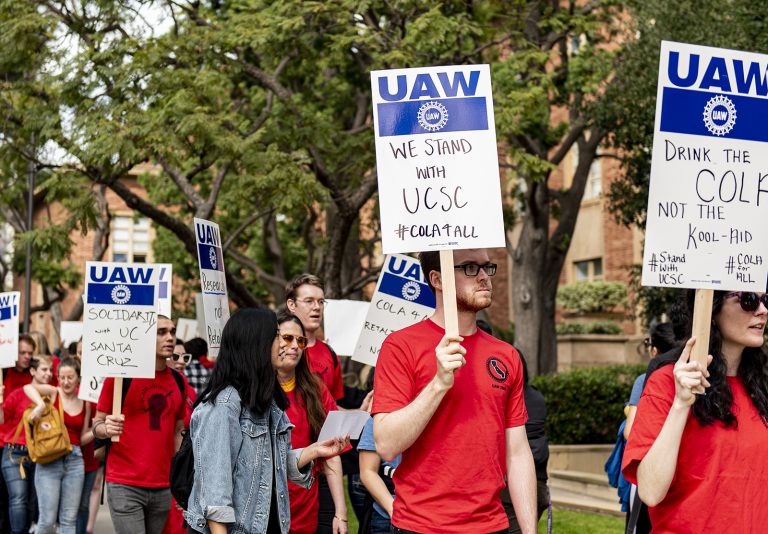
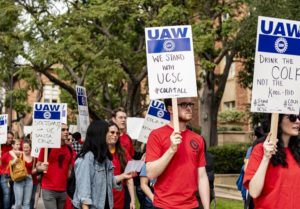 When I first considered writing a retort to Curtis Rumrill’s piece, “Why These Wildcats Will Weaken Us,” I thought it best to refute his argument on the grounds of its many inaccuracies. A retort should be straightforward enough, as Rumrill’s article is replete with false equivalencies, counterfactual presumptions, and, unfortunately, misinformation. But these serious problems would never stand if they were not wrapped in nostalgia for a time when academic judiciousness was valued more highly. Rumrill’s article tells us to beware of our un-strategic passions, but his case is made by preying on the anxieties of today’s downgraded and declassed academic labor. Rumrill’s argument, then, not only disfigures the passionate experiences that fuel class struggle. The struggle for justice has never been under the employ of movement strategists who, calculator in hand, preside over the fight from afar. Mr. Rumrill also does something else. His article traffics a dangerous idea into our political situation: that if we find ourselves moved to act, we are as doomed as we are duped.
When I first considered writing a retort to Curtis Rumrill’s piece, “Why These Wildcats Will Weaken Us,” I thought it best to refute his argument on the grounds of its many inaccuracies. A retort should be straightforward enough, as Rumrill’s article is replete with false equivalencies, counterfactual presumptions, and, unfortunately, misinformation. But these serious problems would never stand if they were not wrapped in nostalgia for a time when academic judiciousness was valued more highly. Rumrill’s article tells us to beware of our un-strategic passions, but his case is made by preying on the anxieties of today’s downgraded and declassed academic labor. Rumrill’s argument, then, not only disfigures the passionate experiences that fuel class struggle. The struggle for justice has never been under the employ of movement strategists who, calculator in hand, preside over the fight from afar. Mr. Rumrill also does something else. His article traffics a dangerous idea into our political situation: that if we find ourselves moved to act, we are as doomed as we are duped. 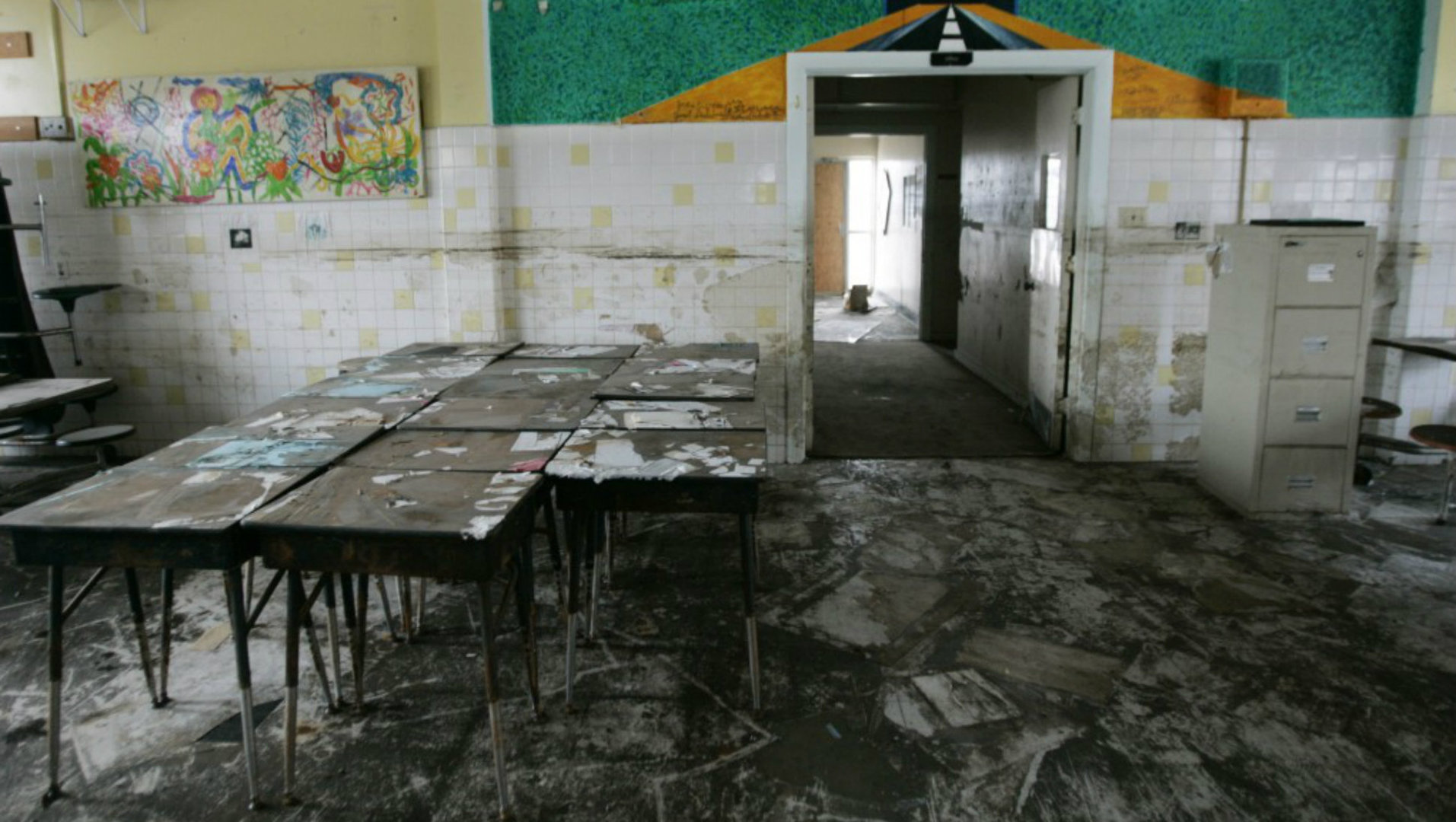

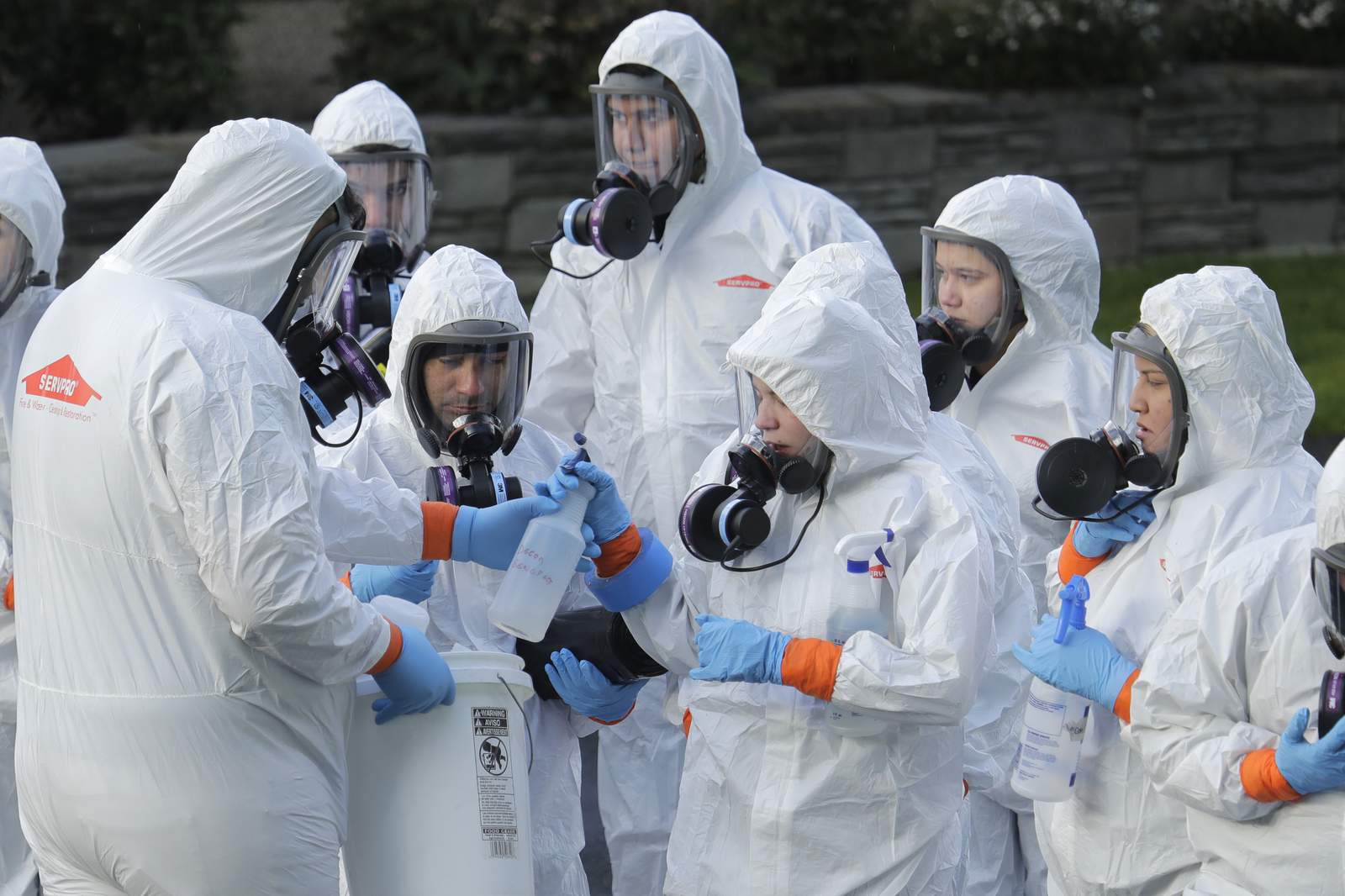
 This article was originally written for
This article was originally written for 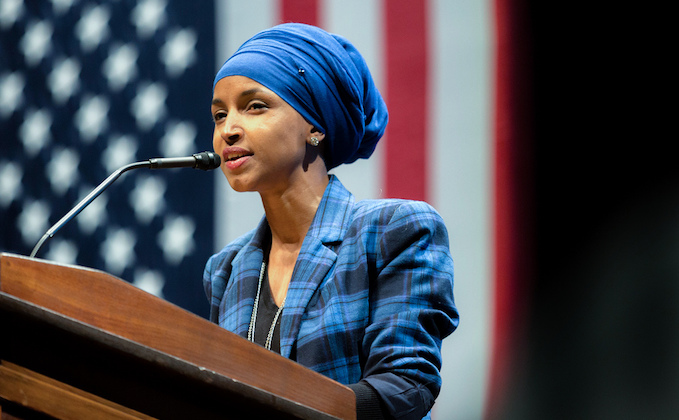

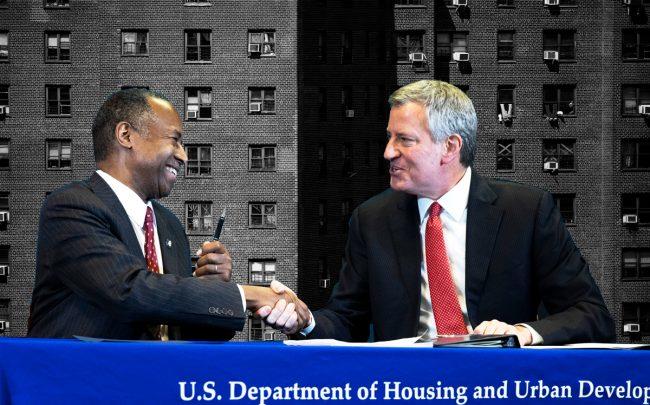



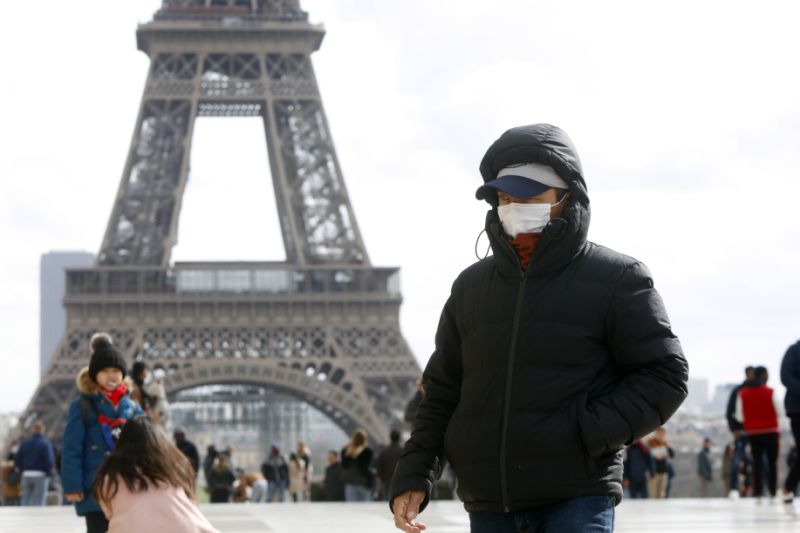
 I’ll begin by telling you a story. In August 1940, when the Luftwaffe was crushing London with its bombs, British bourgeois politicians were very reluctant to open the subway system so that people could take refuge there. It took the intervention of the left—whoever they were—to meet this basic need. By intervention, we mean not only the positions taken, but also direct actions and mobilization. At this particular moment, imperial England, which no longer knew which saint it should pray to, was forced to yield to popular pressure and to ask the “help” of its proletariat to face the bombs and the possibility of a Nazi invasion.
I’ll begin by telling you a story. In August 1940, when the Luftwaffe was crushing London with its bombs, British bourgeois politicians were very reluctant to open the subway system so that people could take refuge there. It took the intervention of the left—whoever they were—to meet this basic need. By intervention, we mean not only the positions taken, but also direct actions and mobilization. At this particular moment, imperial England, which no longer knew which saint it should pray to, was forced to yield to popular pressure and to ask the “help” of its proletariat to face the bombs and the possibility of a Nazi invasion.

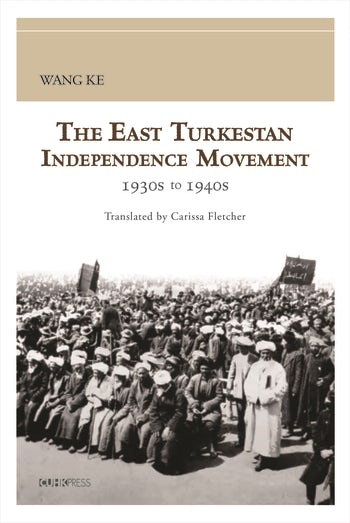
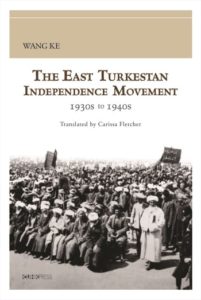 Wang Ke, tr. Carissa Fletcher. The East Turkestan Independence Movement, 1930s to 1940s. Hong Kong: Chinese University Press, 2019. 384 pp.
Wang Ke, tr. Carissa Fletcher. The East Turkestan Independence Movement, 1930s to 1940s. Hong Kong: Chinese University Press, 2019. 384 pp.

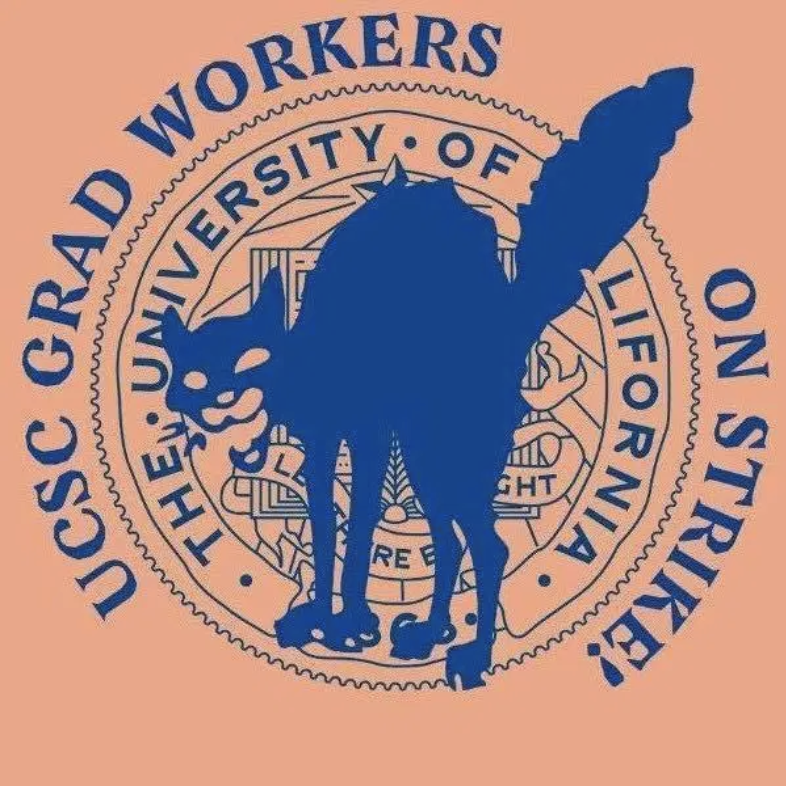
 Our hope was that this could be an official letter officially supported by the East Bay DSA, but that has not come together. Instead, we are issuing this open letter as individual members of the East Bay branch because we think fights like these are precisely the ones that socialists should be advancing and supporting. We know from experience that solidarity across unions and organizations provides lifeblood and morale for workers risking everything to demand what we all deserve. We aim to build the type of socialist movement that sees this task as a given.
Our hope was that this could be an official letter officially supported by the East Bay DSA, but that has not come together. Instead, we are issuing this open letter as individual members of the East Bay branch because we think fights like these are precisely the ones that socialists should be advancing and supporting. We know from experience that solidarity across unions and organizations provides lifeblood and morale for workers risking everything to demand what we all deserve. We aim to build the type of socialist movement that sees this task as a given.

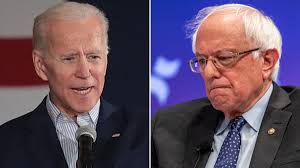
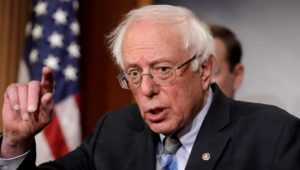

 Now that the dust has settled after the disastrous results of December 12th, it’s time to seriously reconsider the approach of the left in the UK. The electoral defeat of Corbynism has opened up a space for such analysis. As someone who has been somewhat involved in activism both outside of and within the Labour party, I am keenly aware that this is a painful and arduous process for activists who poured a great deal of time and energy into fighting for Corbyn’s Labour. However, the election laid bare serious flaws with electoralism as a strategy for radical change in the UK. Many on the left have laid the blame for defeat at the door of Brexit and whilst I broadly agree with this, it’s imperative that we also examine why Brexit became such a central issue and why the left was incapable of addressing that issue.
Now that the dust has settled after the disastrous results of December 12th, it’s time to seriously reconsider the approach of the left in the UK. The electoral defeat of Corbynism has opened up a space for such analysis. As someone who has been somewhat involved in activism both outside of and within the Labour party, I am keenly aware that this is a painful and arduous process for activists who poured a great deal of time and energy into fighting for Corbyn’s Labour. However, the election laid bare serious flaws with electoralism as a strategy for radical change in the UK. Many on the left have laid the blame for defeat at the door of Brexit and whilst I broadly agree with this, it’s imperative that we also examine why Brexit became such a central issue and why the left was incapable of addressing that issue.
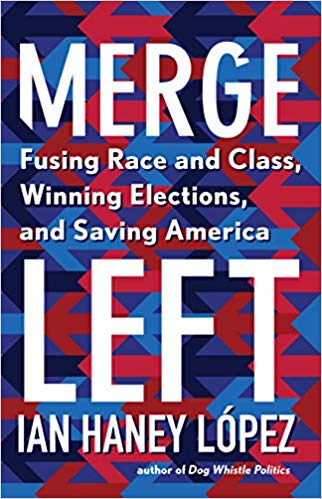
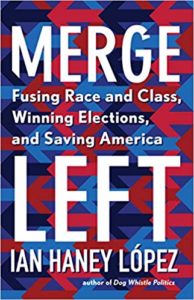 Ian Haney López, Merge Left: Fusing Race and Class, Winning Elections and Saving America. New York: The New Press, 2019.
Ian Haney López, Merge Left: Fusing Race and Class, Winning Elections and Saving America. New York: The New Press, 2019.

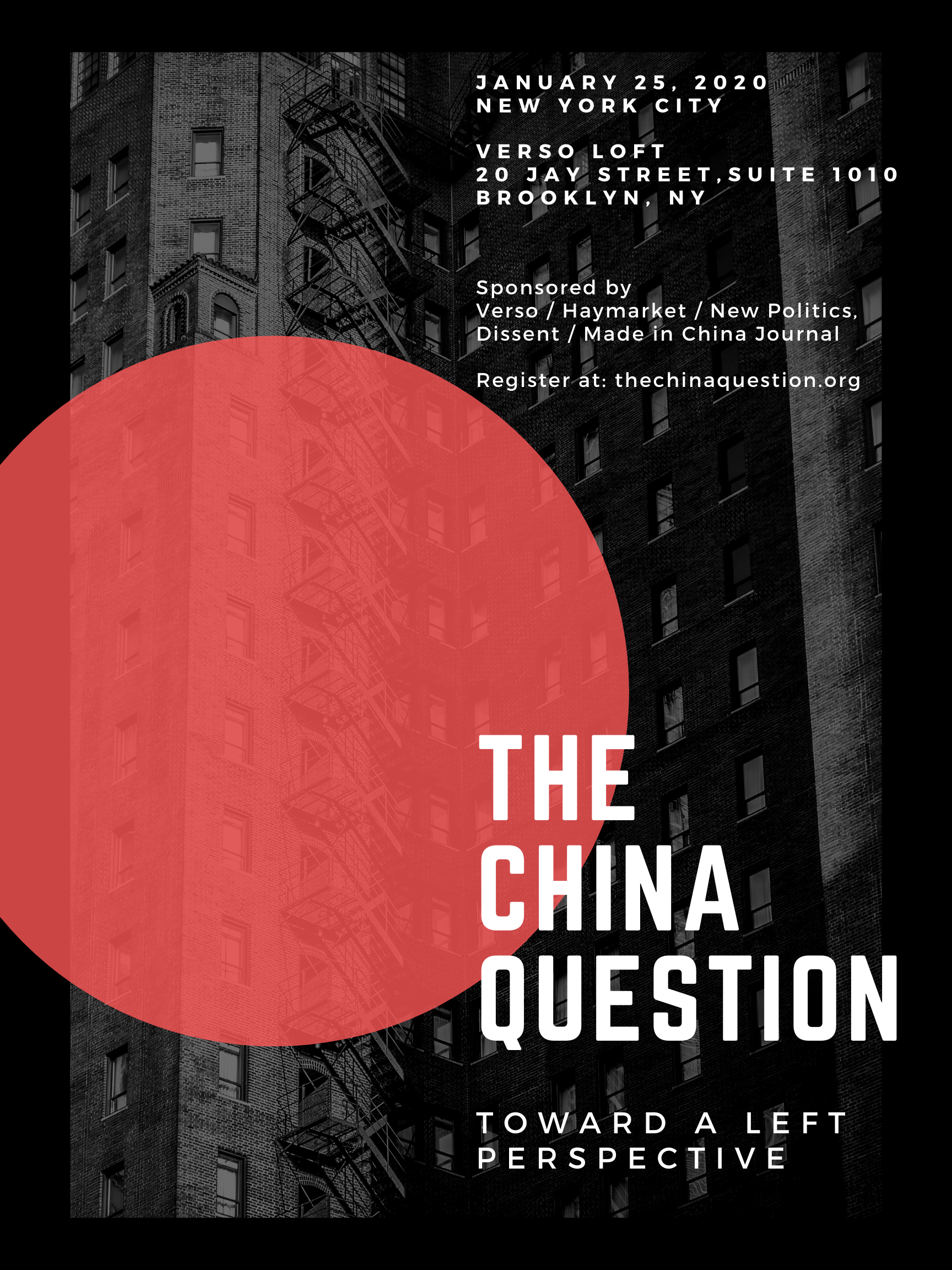
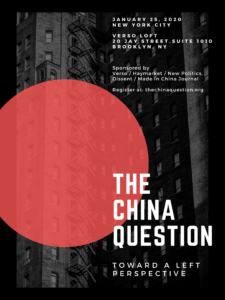 ‘[T]here is a growing consensus,’ two Obama-era officials wrote recently in Foreign Affairs, ‘that the era of engagement with China has come to an unceremonious close.’ American intelligence chiefs now talk of the ‘existential threat’ that China poses to the US, while Secretary of State Mike Pompeo has been touring the globe lecturing nations on the risks of doing business with Beijing. There are, of course, the usual Trumpian contradictions. With his trade war arriving at an inconclusive phase-1 armistice, Donald Trump proclaimed in his State of the Union address that ‘we have the best relationship we’ve ever had with China.’ But the signs of brewing conflict across the Pacific are becoming more evident by the day.
‘[T]here is a growing consensus,’ two Obama-era officials wrote recently in Foreign Affairs, ‘that the era of engagement with China has come to an unceremonious close.’ American intelligence chiefs now talk of the ‘existential threat’ that China poses to the US, while Secretary of State Mike Pompeo has been touring the globe lecturing nations on the risks of doing business with Beijing. There are, of course, the usual Trumpian contradictions. With his trade war arriving at an inconclusive phase-1 armistice, Donald Trump proclaimed in his State of the Union address that ‘we have the best relationship we’ve ever had with China.’ But the signs of brewing conflict across the Pacific are becoming more evident by the day.
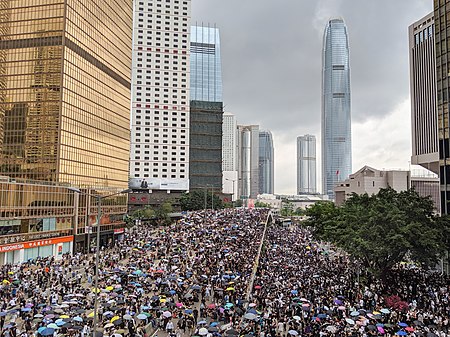
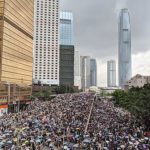 The western mainstream media tends to depict the situation of HK merely in a one dimensional manner, presenting Hong Kong a victim of Beijing’s tyranny while the US and the UK as supporters of Hong Kong’s autonomy and democracy. On the other hand, Beijing claims that it remains committed to Hong Kong’s autonomy and democracy but the latter is now under threat from “foreign intervention”. The two sides mirror each other in terms of their argument. The real picture is actually much more complicated.
The western mainstream media tends to depict the situation of HK merely in a one dimensional manner, presenting Hong Kong a victim of Beijing’s tyranny while the US and the UK as supporters of Hong Kong’s autonomy and democracy. On the other hand, Beijing claims that it remains committed to Hong Kong’s autonomy and democracy but the latter is now under threat from “foreign intervention”. The two sides mirror each other in terms of their argument. The real picture is actually much more complicated.